FRTR at 30 Years: Grand Challenges and Opportunities for Advancing Remediation Technologies, Session 1
Sponsored by: Federal Remediation Technologies Roundtable (FRTR)
Archived: Wednesday, May 19, 2021
The Spring 2021 Meeting of the Federal Remediation Technologies Roundtable (FRTR) will be held as two webinar sessions on May 19 and May 26, 2021. This special 30-year anniversary meeting will convene senior leaders from all FRTR member agencies to discuss progress in remediation programs and opportunities for innovative technology applications at complex sites. As always, FRTR meetings are open to the public.
FRTR's objectives for this meeting are to:
- Provide an overview of the grand remediation challenges facing member agencies over the next decade.
- Discuss specific technology needs across programs.
- Highlight agency program initiatives to advance technologies that will expedite and improve site cleanup.
Session 1: Grand Challenges
This session will consist of a virtual panel discussion by senior-level leaders from the FRTR member agencies involved in site remediation programs. The panel discussion will be facilitated by Dan Powell, Chief of the Technology Integration and Information Branch in U.S. EPA's Office of Superfund Remediation and Technology Innovation.
Session 2: Advancing New Technologies
This session will consist of a virtual panel discussion by senior-level leaders from the FRTR member agencies involved in research and application of new and innovative site characterization and remediation technologies at complex sites. The panel discussion will be facilitated by Kent Glover of the U.S. Air Force Civil Engineer Center. Dr. Glover is the Air Force Subject Matter Expert (SME) for Remediation Systems and the FRTR Steering Committee Chair.
The following agencies will be represented at this meeting:
- U.S. Air Force-Civil Engineer Center (AFCEC)
- U.S. Army Corps of Engineers (USACE)
- U.S. Department of Energy (DOE)
- U.S. Environmental Protection Agency (U.S. EPA)
- U.S. Geological Survey (USGS)
- U.S. Navy-Naval Facilities Engineering Systems Command (NAVFAC)
- U.S. Nuclear Regulatory Commission (U.S. NRC)
- National Institutes of Health-National Institute of Environmental Health Sciences (NIEHS)
- Strategic Environmental Research and Development Program (SERDP) and Environmental Security Technology Certification Program (ESTCP)
Accessibility, Recording, and Content Disclaimer
Rehabilitation Act Notice for Reasonable Accommodation
It is EPA's policy to make reasonable accommodation to persons with disabilities wishing to participate in the agency's programs and activities, pursuant to the Rehabilitation Act of 1973, 29 U.S.C. 791. Any request for accommodation should be made to Cindy Frickle at 703-603-8763 or frickle.cynthia@epa.gov, preferably one week or more in advance of the webinar, so that EPA will have sufficient time to process the request. EPA would welcome specific recommendations from requestors specifying the nature or type of accommodation needed. Please note that CLU-IN provides both alternate phone call-in options and closed captioning for all webinars, and requests for these specific accommodations are not necessary.
Webinar Recording
By participating in this CLU-IN webinar, you automatically agree to authorize recording of audio and visual content presented during this live event and consent to subsequent use of this recording in the public domain by the U.S. Environmental Protection Agency. This recording may include questions, comments and poll responses provided by you during the live event in addition to your name, voice, image or likeness. This recording will be made available after the conclusion of the live event as part of the CLU-IN webinar archives, and will remain available indefinitely. If you do not wish to consent to the recording, please do not join the live event, and contact Jean Balent at 202-566-0832 or balent.jean@epa.gov to discuss your concerns.
Content Disclaimer
This webinar is intended solely to provide information to the public. The views and opinions expressed as part of this webinar do not necessarily state or reflect those of the U.S. Environmental Protection Agency. It is not intended, nor can it be relied upon, to create any rights enforceable by any party in litigation with the United States, or to endorse the use of products or services provided by specific vendors. With respect to this webinar, neither the United States Government nor any of their employees, makes any warranty, express or implied, including the warranties of merchantability and fitness for a particular purpose, or assumes any legal liability or responsibility for the accuracy, completeness, or usefulness of any information, apparatus, product, or process disclosed, or represents that its use would not infringe privately owned rights.
Presenters:
 Dana Stalcup, Deputy Director, Office of Superfund Remediation and Technology Innovation, Office of Land and Emergency Management, U.S. Environmental Protection Agency (Stalcup.Dana@epa.gov or 202-566-1067)
Dana Stalcup, Deputy Director, Office of Superfund Remediation and Technology Innovation, Office of Land and Emergency Management, U.S. Environmental Protection Agency (Stalcup.Dana@epa.gov or 202-566-1067)
Dana Stalcup is the Deputy Director of the Office of Superfund Remediation and Technology Innovation (OSRTI), Dana served as the Deputy Director of OSRTI beginning in spring 2017. Prior to joining OSRTI’s immediate office, he served as the office’s Assessment and Remediation Division Director (2014-2017) and Associate Division Director (2013-2014) as well as a 2012 stint as the Associate Director of OSRTI’s Technology Innovation and Field Services Division. Dana joined EPA in 1991, initially working in the Agency’s Oil Spill Program. After the 9/11 attacks, he joined EPA’s Emergency Response and Homeland Security preparedness program where he worked extensively on both the Hurricane Katrina (2005/2006) and Deepwater Horizon BP Gulf Oil Spill (2010) responses. Prior to joining EPA, Dana worked for several years in the private sector as a government contractor. Dana holds a Bachelor of Science in Chemical Engineering from the University of Notre Dame, a Master’s degree in Engineering Administration from Virginia Tech, and is a Registered Professional Engineer in Virginia. Dana has been happily married to Cindy for 34 years, and they have six children (five sons and a daughter) and two lovely granddaughters.
 Lara Beasley, Chief - Environmental Division, U.S. Army Corps of Engineers Headquarters
Lara Beasley, Chief - Environmental Division, U.S. Army Corps of Engineers Headquarters
Ms. Lara E. Beasley was appointed Chief of the Environmental Division at Headquarters, U.S. Army Corps of Engineers (USACE) in February 2020. As Chief of the Environmental Division, Ms. Beasley oversees USACE's environmental mission and a team of professionals who enable its worldwide military and civil works environmental responsibilities. The program provides technical management, design, and execution of approximately $1.9 billion annually in environmental services to include environmental cleanup, compliance, pollution prevention and natural and cultural resources management for the Department of Defense, Army and Air Force installations and other interagency partners. She also serves as the leader of the Environmental Community of Practice, whose activities focus on professional development, technical competency enhancement and sharing of lessons learned and innovations across the 4,000 environmental specialists across USACE.
Ms. Beasley has more than 17 years combined Department of Defense and private industry experience working environmental/energy policy and national security issues. Prior to her current assignment, she served as the Environmental Support Branch Chief for the Headquarters, USACE Environmental Division from 2018 to 2019, overseeing the annual execution of $1 billion in Environmental Service work for Department of Defense and federal agency partners. Other assignments include: serving as the National Program Manager for Sustainability and Program Manager for the Formerly Used Defense Sites Management Information System (FUDSMIS) Program at Headquarters, USACE Environmental Division; and Military Munitions Program Manager and Environmental Geologist at the USACE Albuquerque District. Prior to working for the Department of Defense, Ms. Beasley worked as a Staff Geologist with Shaw Environmental, Inc.
Ms. Beasley is a graduate of the U.S. Naval War College, receiving a Master of Arts in National Security and Strategic Studies in 2017. She also received a Bachelor of Science Degree in Environmental Science with an option in Geology from the New Mexico Institute of Mining and Technology in 2002.
Ms. Beasley also completed the Defense Senior Leader Development Program in 2018. During this assignment she served as a policy analyst and advisor to the Deputy Assistant Secretary of Defense-Russia, Ukraine and Eurasia and other senior Department of Defense officials on the political-military-security aspects of U.S. security relations with Armenia and Azerbaijan.
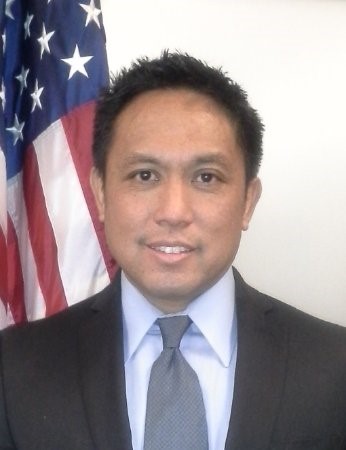 Rob Sadorra, Director, Environmental Restoration Division, Naval Facilities Engineering Command HQ
Rob Sadorra, Director, Environmental Restoration Division, Naval Facilities Engineering Command HQ
Mr. Rob Sadorra of the U.S. Naval Facilities Engineering Systems Command (NAVFAC) serves as the Director of the Environmental Restoration Division, currently a $5.6 B environmental program with over $350M in annual execution. Prior to serving at NAVFAC headquarters, Mr. Sadorra worked as a Remedial Project Manager at the NAVFAC Washington field office, responsible for the execution of environmental cleanup at nearly 100 Navy sites, several under the National Priority List. Mr. Sadorra began his Government career as a Construction Engineer for the U.S. General Services Administration (GSA), providing design and construction engineering services for the GSA's federal clients.
 Kent Glover, Ph.D., U.S. Air Force Civil Engineer Center (AFCEC) (kent.glover@us.af.mil)
Kent Glover, Ph.D., U.S. Air Force Civil Engineer Center (AFCEC) (kent.glover@us.af.mil)
Dr. Glover has been involved in groundwater and vadose zone remediation since the early 1980s. Currently, he is the Air Force Subject Matter Expert (SME) for Remediation Systems and provides technical leadership in remedy selection, implementation, performance evaluation and optimization. He also provides expertise in numerical modeling of contaminant fate and transport, and remediation of non-aqueous phase liquids. Before coming to the Air Force in 2010, he was a Principal Scientist for several engineering firms providing consulting services to private sector and governmental clients. From 1976 until 1989, he served in the U.S. Geological Survey as a hydrologist for groundwater contamination and water resources projects across the western United States. He holds a Ph.D. and M.S. in Environmental Science and Engineering from Colorado School of Mines and a B.S. in Watershed Science from Colorado State University.
Mark Gilbertson, Associate Principal Deputy Assistant Secretary for Regulatory and Policy Affairs, Office of Environmental Management, U.S. Department of Energy
Mark Gilbertson was appointed Associate Principal Deputy Assistant Secretary for Regulatory and Policy Affairs in the Office of Environmental Management (EM) in November 2020. The EM Office provides technical and policy support in the planning and field-execution of EM waste and materials disposition, soil and groundwater remediation, and deactivation and decommissioning of EM facilities. Mr. Gilbertson provides leadership on matters related to regulatory affairs defined by law or negotiated or stipulated compliance agreements. In his more than 25 years in the EM complex, he has served in a number of key senior leadership positions. Prior to EM, Mr. Gilbertson served in several key leadership positions for the Department of Energy such as Legacy Management and the former Environment, Safety and Health Office. He also spent four years at the Environmental Protection Agency working on the Resource Conservation and Recovery Act regulations and prior to that, as an engineering consultant. Mr. Gilbertson holds a Bachelor of Science in Chemical Engineering from the University of Wisconsin and an Executive Certificate in Management and Leadership from the Massachusetts Institute of Technology.
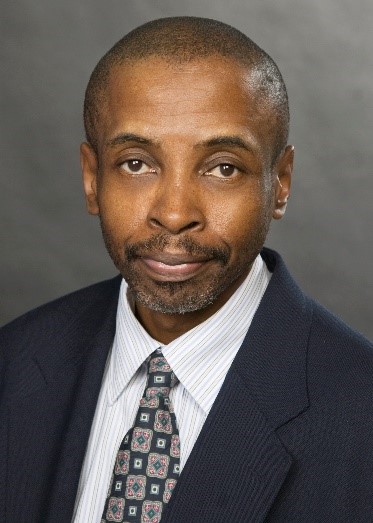 Mark Thaggard, Director, Division of Risk Analysis, Office of Nuclear Regulatory Research, U.S. Nuclear Regulatory Commission
Mark Thaggard, Director, Division of Risk Analysis, Office of Nuclear Regulatory Research, U.S. Nuclear Regulatory Commission
Mr. Thaggard is currently the Director of the Division of Risk Analysis in the Office of Nuclear Regulatory Research at the U.S. Nuclear Regulatory Commission where he oversees the development of methods and models for analyzing risks from the use of radioactive material. Mr. Thaggard joined the U.S. Nuclear Regulatory Commission in 1989 as a Hydrologist and have had several progressively more responsible positions throughout his 30 plus years with the NRC. Mr. Thaggard received his bachelor's degree in Geology from the University of South Florida and master's degrees in Applied Mathematics and Environmental Engineering from Johns Hopkins University. He is a graduate of the NRC's Senior Executive Service Candidate Development Program.
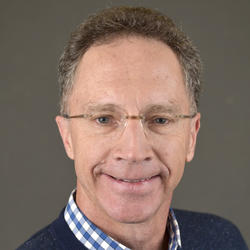 Geoffrey S. Plumlee, Ph.D., Chief Scientist of the USGS (gplumlee@usgs.gov)
Geoffrey S. Plumlee, Ph.D., Chief Scientist of the USGS (gplumlee@usgs.gov)
Dr. Geoff Plumlee has served in his current position (first as Senior Science Advisor to the USGS Director and now Chief Scientist of the USGS) since February 2019. In this position, Geoff provides strategic scientific vision and counsel to the Director and other executive leaders of the USGS on inter- and transdisciplinary USGS science research priorities, activities, capabilities, and partnerships. From May 2016 to early 2020, Geoff was the USGS Associate Director for Environmental Health, where he led USGS research at the intersection of the environment and health.
Geoff brought to these executive leadership positions over 30 years of research and science leadership experience with the USGS, as well as his ability to seek out and establish successful research collaborations with scientists from a broad range of earth, health, social, emergency response, and engineering science disciplines. From 1983 through May 2016 he helped lead and carry out many research projects on linkages between mineral resources, the environment, disasters, and human health.
Geoff is a Fellow of the Geological Society of America (GSA) and past Chair of the GSA Geology and Health Division. He is a member and past Council Member of the American Geophysical Union (AGU), where he proposed the idea for and worked to help establish the new AGU GeoHealth Section. Geoff has been an adjunct clinical assistant professor at the University of Colorado School of Public Health since 2009, where he helped design and for 10 years lectured in a transdisciplinary course on environmental exposures and health.
Geoff is author or co-author of more than 140 scientific papers, including many in technical journals and books across a wide range of scientific disciplines such as environmental geochemistry, public health, natural hazards, economic geology, and geology. Geoff has received the Department of the Interior Superior and Meritorious Service awards, the GSA Geology and Health Division Distinguished Service Award, and the Society of Economic Geologists Waldemar Lindgren (Early Career Scientist) Award.
 William Suk, Ph.D., M.P.H., Superfund Research Program, National Institute of Environmental Health Sciences (suk@niehs.nih.gov or 984-287-3325)
William Suk, Ph.D., M.P.H., Superfund Research Program, National Institute of Environmental Health Sciences (suk@niehs.nih.gov or 984-287-3325)
William Suk, Ph.D., M.P.H., is director of both the Superfund Research Program (SRP) and the Hazardous Substances Research Branch in the NIEHS Division of Extramural Research and Training. Suk has served as director of the SRP, a program established by Congress as part of the reauthorization of Superfund in 1986, since its inception. The SRP fosters interdisciplinary research approaches to address the problems associated with potentially hazardous environmental exposures. His affiliation with a number of organizations and committees include: Roundtable on Environmental Health Sciences, Research, and Medicine, Institute of Medicine, National Academy of Sciences; International Advisory Board of the Chulabhorn Research Institute, Bangkok, Thailand; and World Health Organization Consultation on Scientific Principles and Methodologies for Assessing Health Risks in Children Associated with Chemical Exposures. He is also a member of a number of trans-NIH committees. He received his Ph.D. in microbiology from the George Washington University Medical School, and his master's in public health in health policy from School of Public Health at the University of North Carolina at Chapel Hill.
 Heather F. Henry, Ph.D., Program Administrator, NIEHS Superfund Research Program (heather.henry@nih.gov)
Heather F. Henry, Ph.D., Program Administrator, NIEHS Superfund Research Program (heather.henry@nih.gov)
Heather Henry, Ph.D., is a health science administrator for the NIEHS where she oversees Superfund Research Program (SRP) grants that spans human health toxicology, risk assessment, detection technologies and remediation approaches. She provides guidance to potential applicants for SRP’s Multiproject Center Grants (P42s), Individual Research Grants (R01s), Small
Business / Technology Transfer Grants (R41-44; SBIR/STTR), and Conference Grants (R13). Heather studied plant-based environmental remediation
(phytoremediation) and ecological restoration as part of her doctoral work at the University of Cincinnati and as a Fulbright Postdoctoral Fellow at the University of Melbourne and University of Adelaide in Australia. She has been with NIEHS since 2006.
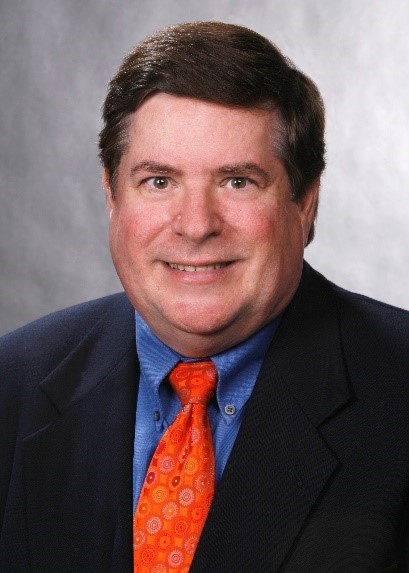 Thomas Nicholson, Senior Technical Advisor for Radionuclide Transport in the Environment, Division of Risk Analysis, Office of Nuclear Regulatory Research (RES), U.S. Nuclear Regulatory Commission (thomas.nicholson@nrc.gov or 301-415-2471)
Thomas Nicholson, Senior Technical Advisor for Radionuclide Transport in the Environment, Division of Risk Analysis, Office of Nuclear Regulatory Research (RES), U.S. Nuclear Regulatory Commission (thomas.nicholson@nrc.gov or 301-415-2471)
Tom has worked at the NRC for 44 years, primarily in research. His principal responsibility is to provide technical advice to NRC senior management concerning radionuclide migration in the subsurface at NRC-licensed facilities. His work focuses on research in radionuclide transport at nuclear facilities primarily due to abnormal, accidental releases to the subsurface. He is a registered Professional Geologist and a certified Professional Hydrogeologist with the American Institute of Hydrology. He is a member of the Federal Remediation Technologies Roundtable Steering Committee.
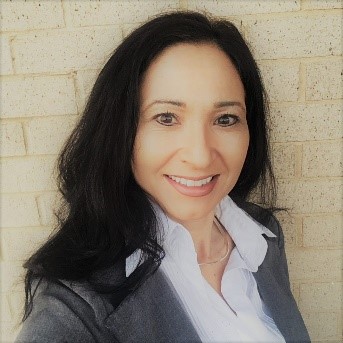 Tanya J. Gallegos, USGS
Tanya J. Gallegos, USGS
Tanya J. Gallegos is a research engineer at the U.S. Geological Survey in Reston, VA. She received a Ph.D. in Environmental and Water Resources Engineering from the University of Michigan. She is a registered Professional Engineer in the State of New Mexico. Her research encompasses inorganic geochemistry, naturally occurring radioactive materials, water use in hydraulic fracturing, environmental impacts of uranium mining, and waste as a resource at abandoned mines.
Moderators:
 Jean Balent, U.S. EPA Technology Innovation and Field Services Division (balent.jean@epa.gov or 202-566-0832)
Jean Balent, U.S. EPA Technology Innovation and Field Services Division (balent.jean@epa.gov or 202-566-0832)
Ms Balent is on the staff of the EPA's Technology Innovation and Field Services Division where she has worked to collect and disseminate hazardous waste remediation and characterization information since 2003. Ms Balent manages the Clean Up Information Network website and actively supports online communication and collaboration resources available to EPA. She formerly worked with the US Army Corps of Engineers Environmental Engineering Division in the Buffalo District. Ms Balent was also a member of the SUNY-Buffalo Groundwater Research Group where she constructed and tested large scale models of groundwater flow. Ms Balent has also conducted research relating to the Great Lakes, environmental remediation, and brownfields re-development. She holds a Bachelor's degree in environmental engineering from SUNY-Buffalo and a Master's degree in Information Technology from AIU.
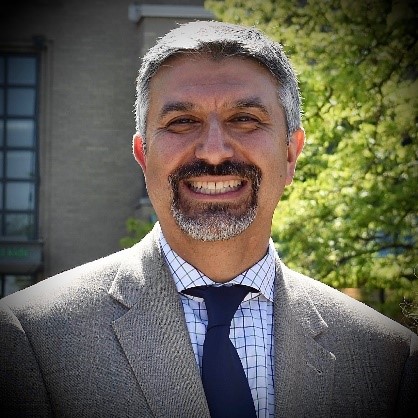 Greg Gervais, Office Director, Federal Facilities Restoration and Reuse Office, Office of Land and Emergency Management, U.S. Environmental Protection Agency
Greg Gervais, Office Director, Federal Facilities Restoration and Reuse Office, Office of Land and Emergency Management, U.S. Environmental Protection Agency
Greg Gervais is the national program manager for the U.S. Environmental Protection Agency's Federal Facilities Superfund Program and the director for EPA's Federal Facilities Restoration and Reuse Office in the Office of Land and Emergency Management. Greg is responsible for national policy development and oversight for over $8 billion in annual cleanup at federal facilities around the country, including 175 National Priorities List sites. He served as FFRRO deputy director from 2016 to 2018. He joined OLEM in 2011 and served until 2016 where he led EPA's innovative remedial technology assessment and knowledge transfer program for the Office of Superfund Remediation and Technology Innovation. Prior to joining OLEM, Greg was a senior engineer, program manager and program evaluator for the National Oceanic and Atmospheric Administration from 2002 to 2011. He previously served as a project manager and chemical engineer for the U.S. Army Corps of Engineers from 1996 to 2002. Greg began his federal career with the EPA Region 10 Superfund program. He holds a Bachelor of Science in Chemical Engineering from the University of Washington, Seattle, WA, and is a licensed Professional Engineer.
Webinar Slides and References:
-
 Slide Presentation for Kent Glover, Ph.D.; AFCEC (778KB/PDF)
Slide Presentation for Kent Glover, Ph.D.; AFCEC (778KB/PDF)
-
 Slide Presentation for Thomas Nicholson, U.S. NRC (1.61MB/PDF)
Slide Presentation for Thomas Nicholson, U.S. NRC (1.61MB/PDF)
-
 Slide Presentation for Tanya Gallegos, USGS (1.85MB/PDF)
Slide Presentation for Tanya Gallegos, USGS (1.85MB/PDF)
-
 Slide Presentation Agency Panel (2.74MB/PDF)
Slide Presentation Agency Panel (2.74MB/PDF)
-
 Slide Presentation Agency Announcements (1.40MB/PDF)
Slide Presentation Agency Announcements (1.40MB/PDF)
-
 Slide Presentation for Heather Henry, Ph.D.; NIEHS (1.08MB/PDF)
Slide Presentation for Heather Henry, Ph.D.; NIEHS (1.08MB/PDF)
Webinar Slides and References:
-
 Slide Presentation for Kent Glover, Ph.D.; AFCEC (778KB/PDF)
Slide Presentation for Kent Glover, Ph.D.; AFCEC (778KB/PDF)
-
 Slide Presentation for Thomas Nicholson, U.S. NRC (1.61MB/PDF)
Slide Presentation for Thomas Nicholson, U.S. NRC (1.61MB/PDF)
-
 Slide Presentation for Tanya Gallegos, USGS (1.85MB/PDF)
Slide Presentation for Tanya Gallegos, USGS (1.85MB/PDF)
-
 Slide Presentation Agency Panel (2.74MB/PDF)
Slide Presentation Agency Panel (2.74MB/PDF)
-
 Slide Presentation Agency Announcements (1.40MB/PDF)
Slide Presentation Agency Announcements (1.40MB/PDF)
-
 Slide Presentation for Heather Henry, Ph.D.; NIEHS (1.08MB/PDF)
Slide Presentation for Heather Henry, Ph.D.; NIEHS (1.08MB/PDF)
Additional Resources:
If you have a suggested topic or idea for a future CLU-IN internet seminar, please contact:
Technology Integration and Information Branch
PH: 202-566-0832 | Email: balent.jean@epa.gov
Technology Integration and Information Branch
PH: 202-566-0875 | Email: adam.michael@epa.gov





